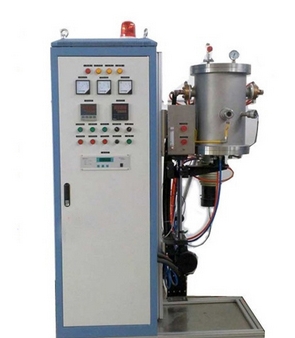- 20
- Nov
Features of heating elements commonly used in ultra-high temperature electric furnaces:
Features of heating elements commonly used in ultra-high temperature electric furnaces:
Molybdenum: Generally used in a vacuum sintering furnace at 1600°C, the volatilization speeds up at 1800°C under vacuum, and the volatilization is weakened in the protective atmosphere hydrogen due to pressure factors, and it can be used up to 2000°C;
Tungsten: Generally used in a vacuum sintering furnace at 2300°C, the volatilization speeds up when the vacuum is 2400°C, the volatilization is weakened in the protective atmosphere hydrogen due to pressure factors, and can be used at 2500°C);
Tantalum: Generally used in a vacuum sintering furnace at 2200°C. Unlike tungsten and molybdenum, tantalum cannot work in an atmosphere containing hydrogen and nitrogen. Its advantage is that its machining performance and welding performance are better than those of tungsten and molybdenum;
Graphite: Generally used in a vacuum sintering furnace at 2200°C, the volatilization speeds up at 2300°C in a vacuum, and the volatilization is weakened due to pressure in the protective atmosphere (inert gas), which can be used at 2400°C;

1. Tantalum is widely used in vacuum furnaces due to its excellent machining performance and welding performance. However, due to its rated operating temperature of 2200°C and its inability to use in protective gas, it restricts its scope of use. Refractory metals such as tantalum and niobium will absorb a large amount of hydrogen atoms in a hydrogen atmosphere, and will cause hydrogen cracking when cooled. Metals such as niobium and tantalum are prone to embrittlement in a hydrogen environment at high temperatures, so they cannot be protected by hydrogen.
What kind of gas protection can tantalum use to reduce volatilization? In addition to the use of argon protection and argon-hydrogen mixed gas protection, as long as the gas that does not react with tantalum during constant temperature heat treatment, it can be used as atmosphere protection. The stability of argon is better than that of nitrogen. However, the inertness of nitrogen is relative, that is, it is not suitable for certain reactions. Magnesium can burn in nitrogen. Therefore, perhaps the reaction cannot use nitrogen as a protective gas, but can only choose argon. How to make tungsten block coated with tantalum material: It can be achieved by plasma spraying a tantalum layer on the surface of the tungsten material under the protection of argon atmosphere.
2. Tungsten Because tungsten has good high-temperature performance, with the improvement and improvement of design and manufacturing technology, tungsten is widely used in vacuum high-temperature furnaces. There is no problem with the use of tungsten in the furnace below 2300℃. At 2300℃, the volatilization will be accelerated, which will affect the service life of the heating body. Therefore, it is generally recommended to use a hydrogen protective atmosphere at 2200~2500℃;
3. Graphite heating element is used for heating graphite in vacuum furnace. It is high-purity, high-strength, isotropically formed isotropic three-high graphite, otherwise reliable high-temperature performance, electrical performance and service life will not be obtained.
4. In the medium and low temperature resistance vacuum furnace, due to the low temperature, tungsten is generally not used, usually only graphite, tantalum, and molybdenum are used; for furnaces below 1000 ℃, nickel-cadmium materials and iron-chromium-aluminum materials are also used. Wait.
